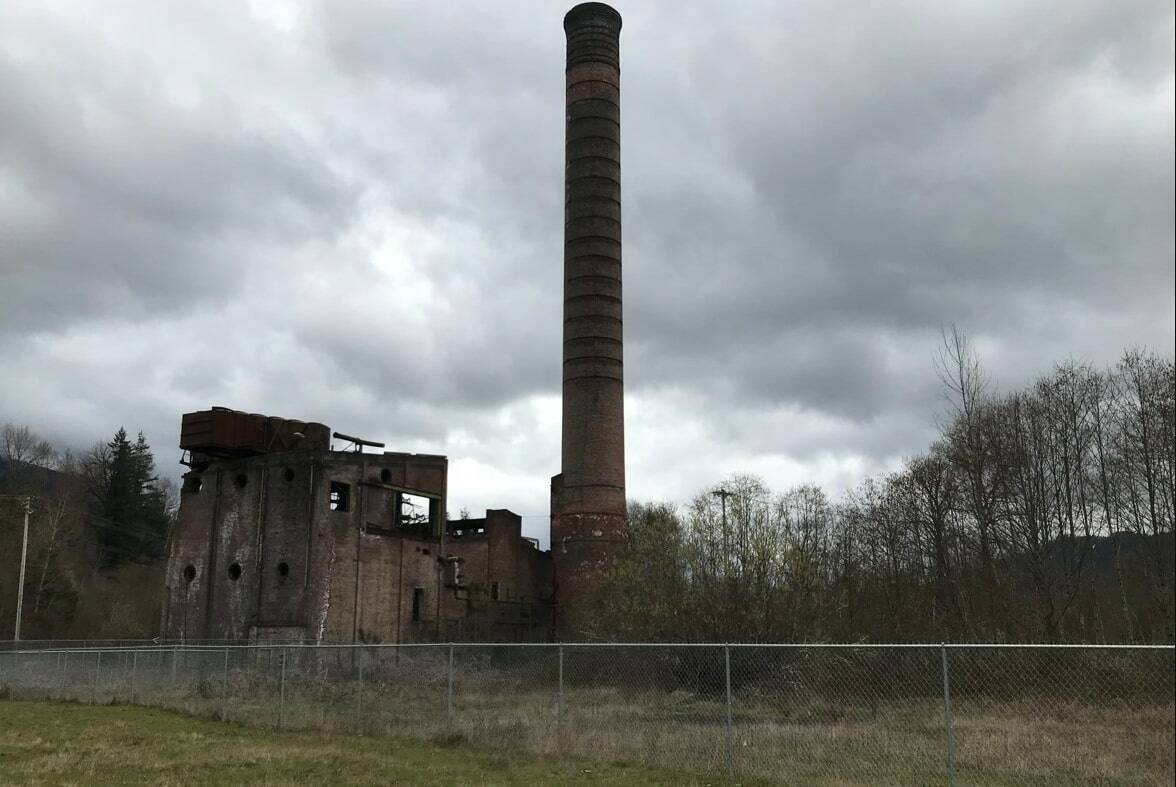The Washington state Department of Ecology completed a site hazard assessment of the Snoqualmie Mill Site on Aug. 23, finding that the site poses a high potential threat to human and environmental health, and will need potentially years of clean-up to remove pollutants.
The site, located just north of downtown Snoqualmie, was given a score of one on the Washington Ranking System. The system ranks sites on a scale of one to five compared to other contaminated sites in the state. A score of one represents the highest potential threat to human and environmental health and highest priority for clean-up.
“We did not find any real surprises,” said Louise Bardy, a toxic cleanup program unit supervisor with the Department of Ecology.
The report comes as the city is expected to release a Final Environmental Impact Statement in the coming days, according to Tom Sroufe, a representative with Snoqualmie Mill Ventures (SMV) LLC.
SMV owns of a majority of the Mill Site and is looking to develop part of the property. The site is a 261-acre property that was annexed by the city in 2012, following the approval of the pre-annexations agreement between the city and SMV.
The proposed development would be built in three phases over a 10- to 15-year period and would bring 1.83 million square feet of properties to the site.
During the site’s time as a lumber mill — between 1916 and 1993 — it was contaminated in multiple areas. Chemicals present in the contamination include PCB, petroleum, arsenic and others. All but two sections of the site have contaminated soil and groundwater, according to the hazard assessment.
The Weyerhaeuser Company bought the mill sometime after its opening, and sold a portion of the property to SMV in 2005. Another portion of the property, not annexed by the city, remains under county control.
“The types of pollution we are seeing are unfortunately not uncommon for the era when operations were occurring,” said Larry Altose, a spokesperson for Ecology’s Northwest office. “The site is larger than many industrial sites and more spread out, but the types of pollution that were allowed to enter ground and groundwater were typical of the practice of the era.”
The Weyerhaeuser Company first reported contamination of the site to the Department of Ecology in 1989, with the site first being investigated in 1990. Between 1991 and 2005, several additional areas of contamination were found.
Clean-up at the site, to some degree, has been ongoing for decades, but will require possibly several more years to bring the site to a healthy status. At this point, the Department of Ecology has not been involved in any clean-up efforts, but some clean-up has been done by the Weyerhaeuser Company.
The time required to clean a site can vary widely, Bardy said, and there is currently no timeline on the Mill Site.
“It depends on when [the owners] start,” she said. “They’ve done work over the years to clean-up different things, like underground storage tanks and transformers, but there’s places that haven’t been assessed yet, so it’s going to take some time.”
The site hazard assessment is one of the beginning stages in the contamination clean-up process, outlined by the state Model Toxics Control Act, which sets requirements for contaminated site clean-up.
The next step in the process will involve a remedial investigation and feasibility study to further look at the impacts the contamination is having and finding an effective plan to clean the site. The process culminates in a clean-up action plan that details how clean-up will proceed.
However, the clean-up process from the Department Ecology does not halt the city from issuing permits for the construction of the property, Bardy said, because the state is not currently enforcing the clean-up.
Sroufe said that SMV would comply with the Department of Ecology’s clean-up process. If the Final Environmental Impact statement is approved, Sroufe said he hopes construction could begin as early as 2023.
Last April, the city completed a Draft Environmental Impact Statement (DEIS), which was submitted to Ecology and the public for comments.
The DEIS received over 900 pages of public comments, including from several major stakeholder. The Tulalip and Snoqualmie Tribes, the Snoqualmie Watershed Forum, the Snoqualmie Valley Preservation Alliance and the Snoqualmie Community Action Network all expressed concerns with the DEIS, alleging that it was insufficient in mitigating flooding or environmental concerns.
“We believe the approach currently outlined in the DEIS is deficient in a few areas and is likely to result in adverse impacts to salmonids and the overall health of the Snoqualmie Watershed, if implemented as written,” the Snoqualmie Watershed Forum wrote in a public comment to the city.
If the Final Environmental Impact Statement is completed, it will appear alongside a Planned Commercial/Industrial Plan, and be given to the city’s planning commission. The planning commission will develop a report and make recommendations on the plan before it is brought to city council for action.
The Valley Record previously reported that Sroufe said that he hoped to bring a Final Environmental Impact Statement to the city council in 2018.
The Valley Record has made multiple attempts to reach Mayor Matt Larson and the Community Development Director Mark Hofman, who oversees the project, for comment.
At this time, Bardy said there is nothing Ecology has seen to suggest that the contamination has impacted drinking water, but this and other questions will need further investigation to answer definitively.
“The remedial investigation has steps that take you further and further to rule that in and rule that out,” Altose said.
The Department of Ecology is also unsure if all contaminants can be removed or if the site will require long-term maintenance. The site is currently on the state’s hazard list, although it could be unlisted, large and more complex sites typically require periodic monitoring for many years.
“We know a little bit about the site,” Bardy said. “But we have questions and we will need more investigation to answer those questions.”


